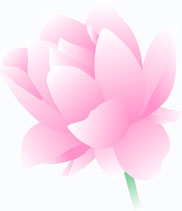In these Lokas, there are thousands of Peacock Formed Aeroplanes and ‘Sankalpamaya’ (thought-based) Tree yielding fruits as per wishes and Pitaras in these Lokas, who too perform Shraadhas to their ancestors, are knowledgable about Spiritual Matters and enjoy full contentment of existence. In another Loka called Martanda those Pitragans of Marichi Garbha stay. Angira Muni Putras reside in Havishman loka; those who perform Shraddhas in Tirthas are entitled in Pitru loka. Some Pitaras could stay in Kamadugdha loka as per their wishes.Similarly, Pitras who were the desendents of Sages Kardama, Pulaha, Kulaha, Bhrigu; Bharadwaja etc. are also comfortably accommodated in other Pitralokas. Beyond Brahma loka is the Sumanasa loka where Pitras called Somapas reside who also partake in the task of Srishti and often visit Manasarovar. Those Vidyavans who tend to satisfy Pitras with Shraddha Daan by pronouncing the word ‘Swadha’and perform ‘havans’ are expected to be highly fortunate! Procedurally, those who perform rites facing the Dakshina direction, with Yagnopaveeta in ‘Apasavya’ or wearing it on right shoulder, using Tarpana’s with Black Til and water and recite the Swadha Mantra by giving away ghee in the Fire-pit are stated to be the ‘dhanyas’ or the blessed ones. The material liked in the fire oblations are Kusha grass, ‘udat dal’ (black gram), ‘saathi dhan’ rice, cow milk, honey, ‘sawa’, ‘jow’, Moong (Green gram), Sugarcane and white flowers are the most liked material for Pitras. On the other hand the following materials be avoided viz. Masoor dal, matar, Rajamash, kulthi, kamal, bilwa, Madara, Dhatura, Paaribhatraat, Rushak, Goat milk, Mahuva etc. By pleasing the Pitras, the devotees concerned secure physical strength, good health, good progeny and Swarga Prapti. ‘Havishyamaana Sanjnak’ Surya Deva who is the Chief of the Shraddhhas is stated to bestow immediate fruits for the ‘homa karyas’ so performed.
In fact, daily shraaddhas with ‘Anna’ (cooked rice), water or milk and fruits/ mulas (sprouts) are highly recommended.There are three kinds of Shraddhas viz. Nitya (regular), Naimittika (Occasional) and Kaamya (aiming at a purpose). Nitya Shradda need not be elaborate with formal ‘Arghya Pradana’ and ‘Avahana’ viz Offering formal Achamana and Welcome with the contents of Mantras. This may be construed as ‘Adaiva’ or targetted to a specific deity. But on ‘Parva dinas’ or special days, Parvana Shraddha is to be performed but those who undertake this Shraddha need to possess the requisite qualifications such as Vedajna, Mantra-Japa performer, Purana Vidwan, Pitru bhakta, etc. In fact, one should take pains to engage in such shraddhas. On the other hand, certain persons should be avioded such as Patitas (immoral), Napumsak (Impotent), diseased and manipulative. The invited Brahmanas for the Shraddhas are stated to assume the Sacred Form of Vayu Deva and usher the Pitras as the Brahmanas so seated. The ‘Pindadaan Vedika’ or the Platform to arrange the ‘Pindas’ of the three generation Pitras be kept ready before hand. The various material required for the Ceremony such as Jalapatra, Kamsya patra, Prokshana, Samidha, Kusha, Tilapatra, Clean Vastra, Gandha, Dhupa, chandana etc. be arranged towards the Southern side at a place purified with cow dung and urine, while Yagnopaveet should be on the right shoulder. In fact, the golden rule is that all actions related to and meant for the Three Generation Pitras of the deceased father/grand father/great grand father or deceased mother/ paternal grand mother/ paternal great grand mother, should be performed with Yagnopaveet on the right shoulder; actions related to Pitras or Rishis should accompany the Yagnopaveet around the neck as a Mala (garland); and all the actions related to the invocation of Devas and ‘Punya Karyas’ should accompany the Yagnopaveet in the normal wearing condition viz.on the left shoulder.At the outset, the ‘Kartha’ or the Performer(s) of Shraddha are required to settle down on a ‘darbhayukta Asana’ Seat with darbha underneath and formally perform ‘Achamana’ with ‘mantrochharana’or recitation of mantra. Normally, two Brahmanas are appointed one to represent Vaishwadeva and another for Pitras, in addition to the Chief Conductor. The Vaishva deva is formally set in the Fire-Pit and Agni, Soma and other deities are satisfied with ghee, Anna or cooked rice etc. The Anna Sesha (remainder) after the ‘homa’ may be converted as small ‘Pindas’ and given away to Brahmanas one by one along with til and water. The main Pindas are then placed on the Pinda Vedika in a row, representing the Three Generations of the Departed Souls, dressed with Kushas, tilas and water, worshipped with chandana, Dhupa and Naivedya, lift them up as gestures of daan on the ground from the Vedika along with mantras. The Pindaas are then consumed by cows, or goats, or Agni or are left in running waters; some times the wife of the householder or the Karta desirous of securing progeny might consume the middle pinda representing the grandfather along with appropriate mantra ‘Aadhhatta Pitaro Garbham’ etc. Then the Brahmanas are satisfied with wholesome meals, dakshina and Vastram; Pitru tarpanas are formally performed by the Karta and thereafter the Karta and the family take the ‘Pitru sesha’. The normal expectation is that neither the Brahmanas engaged, nor the Karta have another meal on the same day; resist from sleeping after the Ceremony during the day and observe abstinence, silence, etc. |
